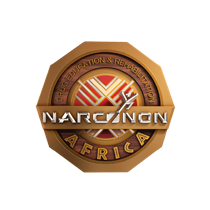Are These New Synthetic Drugs Legal?

One of the factors that make new synthetics so very dangerous is that on the grapevine, young people are getting the message that the drugs are both legal and untraceable on drug tests—powerful appeals to dip one’s toe into these forbidden waters. Users who may be subject to drug tests may use these synthetics so they don’t get caught. The military has had trouble with synthetic drug abuse because drug tests have not been able to keep up with all the new formulas.
In Europe, agencies responsible for the control of illicit drugs are monitoring more than 250 different formulas to see what harm results and to determine if there should be legislation to outlaw them. In May 2013, a news report stated that two of the chemicals that might be found in ’synthetic marijuana’ now could be detected on a test. But there are many, many different chemicals that could be used in synthetic marijuana, with more formulas being developed all the time.
It’s a criminal game of cat and mouse—chemists continually creating new harmful and addictive formulas and law enforcement and health officials trying to detect as many as possible. And then legislators slogging along trying to pass laws that ban those dangerous chemicals that can be formally be identified as ’harmful’.
Getting Legislation Passed to Ban These Drugs
It takes time for legislators to hear about the drug from law enforcement, collect up enough scientific evidence on which to base new laws, and then get those laws written, debated, and passed. It is a tediously slow and ineffective process. In the meantime, gullible young people are being harmed or killed.
The Drug Enforcement Agency (DEA) acted in 2011 to place a temporary, national ban on the main synthetics that were wreaking havoc at that time:
- Mephedrone
- MDPV, known chemically as 3,4 methylenedioxypyrovalerone
- Methylone.
These were the main chemicals found in the new ’bath salts’ that were hitting the market. (These drugs were being labeled ’bath salts’ so they could be sold with the disclaimer ’not for human consumption.’) The problem with a DEA federal ban is that state or local law enforcement can’t use it to seize drugs and arrest sellers. Only federal agents can do that. There are not enough of them to prosecute the thousands of sellers across the country. A DEA ban is better than nothing and undoubtedly helps support state legislation, but is slow to take these drugs off the streets.
State by state, legislation is being passed to outlaw these drugs. But just as fast as the three ’bath salt’ chemicals and a few others were banned, new formulas hit the market. As of May 2013, there were 84 drugs just in one category—synthetic cannabinoid (marijuana)—being monitored in Europe. The DEA and other government entities continue to monitor the latest synthetics on the market and can the chemicals they continue. In 2015, a synthetic opioid closely related to fentanyl called furanyl fentanyl cropped up and was banned by the DEA.

There is a federal law that allows for the prosecution of anyone selling a drug that is ‘chemically similar to an outlawed drug.’ This 1986 law is called the Federal Analog Act. The law specifies that for the substance to be prohibited, it must be ’intended for human consumption.’ Criminal drug manufacturers, therefore, simply package the drugs in foil or plastic containers that say ’Not for Human Consumption,’ ’Research Chemicals,’ ’Incense,’ ’Plant Fertilizer’ or ’Bath Salts.’ The dangerous group of drugs that were generically labeled bath salts gained renown as stories of psychosis, homicide, and suicide surfaced. But there are many others.
Synthetics Articles
- Synthetics
- Rise of Synthetics
- Horror Stories
- Dangers
- Classes
- Emergency Room Visits
- Safety
- Already Using
Resources:
